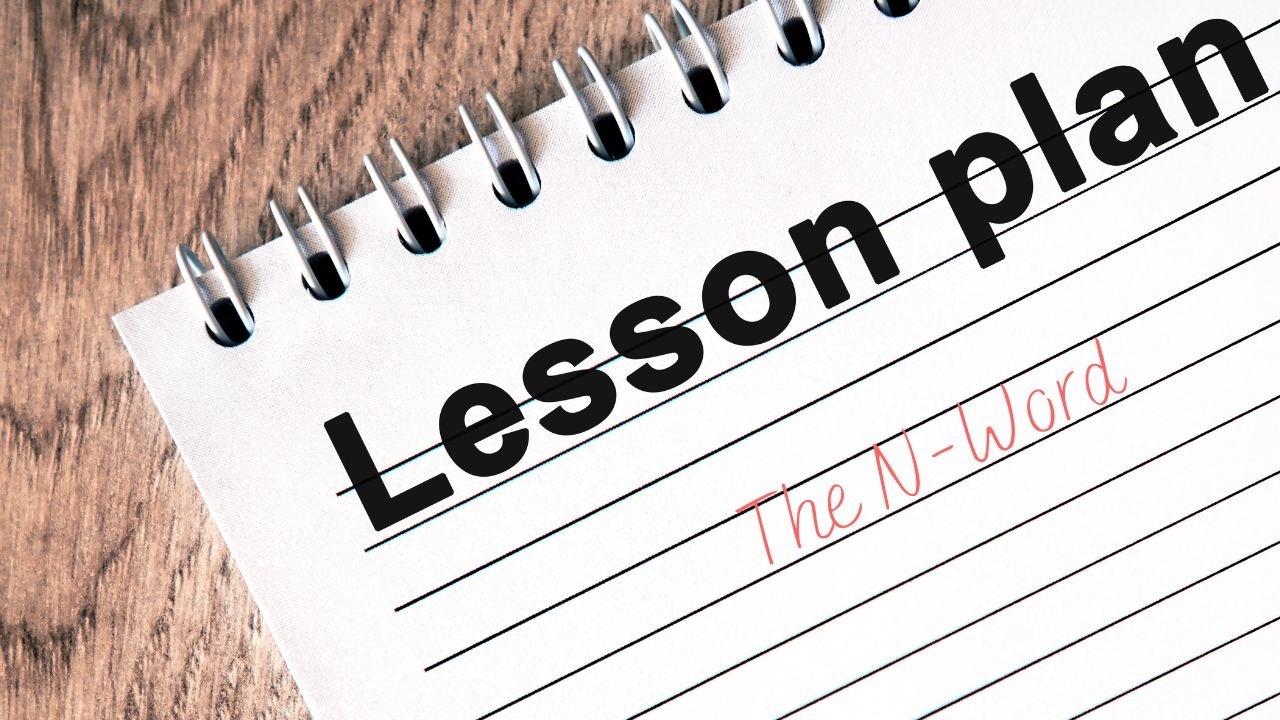
A Lesson on the N-Word
Nov 01, 2017You can’t teach the book The Adventures of Huckleberry Finn and not discuss the n-word. Ignoring it is irresponsible. So, how does a teacher engage her class in a discussion around this very controversial and complicated word?

NOTE: My current teaching context is a small independent school with a predominantly white student body. In this post, I'm thinking about that context and demographic.
It begins with love. I teach this because I hope to impact students in a way that causes them to become critical thinkers. I want them to challenge the world around them. I want them to see others as humans and not repeat the atrocities committed against other humans in the past. So, I lead this lesson from a place of love.
Students need to speak and be heard. My lesson begins with the acknowledgment that this is uncomfortable and touchy. I address the tension in the room and use my sense of humor to defuse that a bit. I also preface with some rules for engagement and let them know that this is the perfect time to ask those questions that have been burning in them. This lesson, this day, is a great opportunity to make a mistake. Here are some ways to start this dialogue:

In the blue squared image above, there are 7 emojis featuring various emotions: happy, sad, upset/crying, scared, indifferent, negative or annoyed, and confused.
It’s important to offer a diverse range of voices and points of view. The selection of resources for this discussion has to be careful, critical, and thoughtful. I can’t show superficial videos or read articles that will shut down any sides of the conversation. A well-rounded set of sources provokes critical thinking. We usually watch this CNN clip featuring Marc Lamont Hill. We also watch this exchange between two television anchors as they debate about Former President Barack Obama’s use of the n-word. We also watch a selection of videos from this Washington Post Project called The N-Word.
Independent reflection space is key. When we are done with our group discussions, I believe in independent processing time. I offer students a writing task they can use to reflect on points made and develop their own stance, to the best of their ability. The expectation is that they will go beyond synthesizing into developing an informed point of view. My goal is to have them explore this issue and think deeply; be prepared to engage outside of our classroom and defend a thoughtful stance. Here are some prompts you can consider:

In the blue squared image above, there are 5 prompts you can consider for students to reflect. There are red checkmarks next to each prompt.
Individual engagement with me (the educator) is necessary. How I respond to those one-page responses is also important. This is where I can encourage, challenge, critique, and/or question statements and stances that students develop. We do it on an individual level, via my comments on their Google document. This type of individualized attention continues to build my relationship with each student and builds trust. When it’s time to engage (again) in a whole group discussion about these controversial and uncomfortable topics, students feel supported and acknowledged and this is why they participate. I often share some of the learning moments students had as we discussed their thoughts and writing.
A lesson on the n-word is not easy. It’s not comfortable. It can’t be a simple lesson plan that a teacher copies because this requires YOU to be present and engaged. You need your own swag. But for sure, start with love, push them into discomfort, and wait on the other end with open arms.
Don't miss a beat!
Get our blog delivered to your email whenever we post!
We hate SPAM. We will never sell your information, for any reason.

